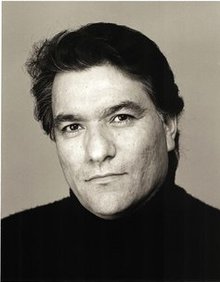Select a particular work of art to view additional information and images that can be enlarged.

World-renowned artist Dan Namingha found his profession in early childhood, when his skill at drawing impressed his family by age 4. But no one was particularly surprised; art was a family affair, dating back to his great-great-grandmother, the famous Hopi potter Nampeyo, and running through the generations to current kachina carvers and potters. Namingha received encouragement from family and a series of teachers, one of whom persuaded him to submit work to an art scholarship summer program at the University of Kansas, Lawrence. The eight-week program led him on to the IAIA (Institute of American Indian Arts) in Santa Fe, where he was encouraged to develop his own way of painting and tune in to the depths of his imagination. He then studied at the American Academy of Art in Chicago, devouring the work of modern masters. A stint in the Marines gave him “precious opportunity to think” about what his art could become, and this led him to the quest to “transform the subject matter of Native American art and its customary realism into an abstract, almost minimal form.” He returned to IAIA for a few months, then launched on his own into an intensive practice of painting.
Namingha’s artistic journey has led him to combine his personal ideas and memories with the symbolism of his Hopi-Tewa culture, to translate the powerful geography of the Southwest through formal concepts of modern art and composition. His work often draws on the sacred traditions of his culture: the kachinas representing the spirit messengers, ancestors, and cloud people; the dualities of light and dark, of positive and negative; the passages between the everyday world and the spirit realm. He loves working in a broad variety of media; his acrylic paintings are widely known, but he cast his first bronze in 1974, and sculpture remains a significant part of his work. Collage is another favorite medium, often including his own handmade papers.
Critical acclaim greeted Namingha’s earliest work, and it has never ceased. He has exhibited in dozens of one-man shows and many more group exhibitions, and his work hangs in more than thirty major institutions, including the Smithsonian Institution, the Sundance Institute, the Heard Museum, and the British Royal Collection in London and other museums worldwide. He has received awards from the Harvard Foundation and the Fogg Art Museum, as well as the Visionary Award from the Institute of American Indian Arts Foundation. His work has toured Europe as part of an exhibition sponsored by the United States Information Agency and is found in several U.S. embassies.
